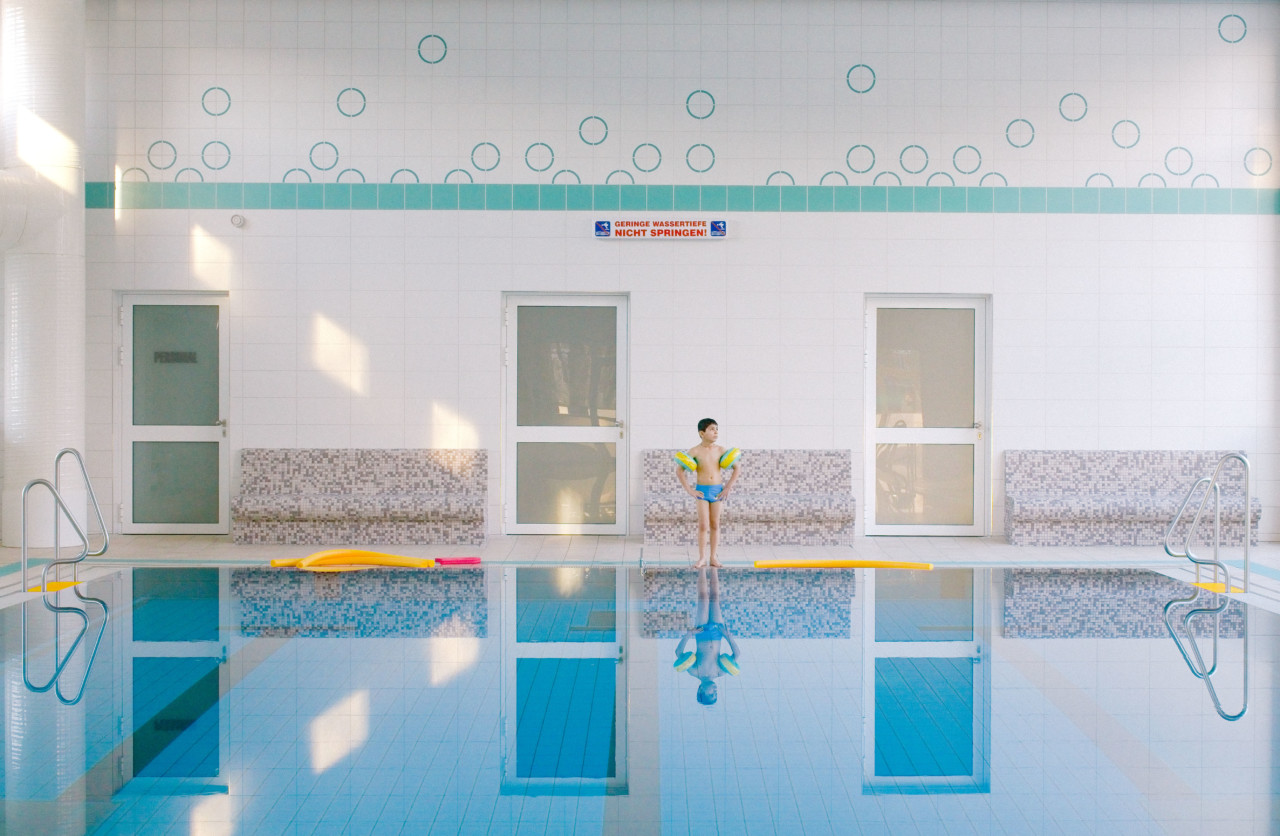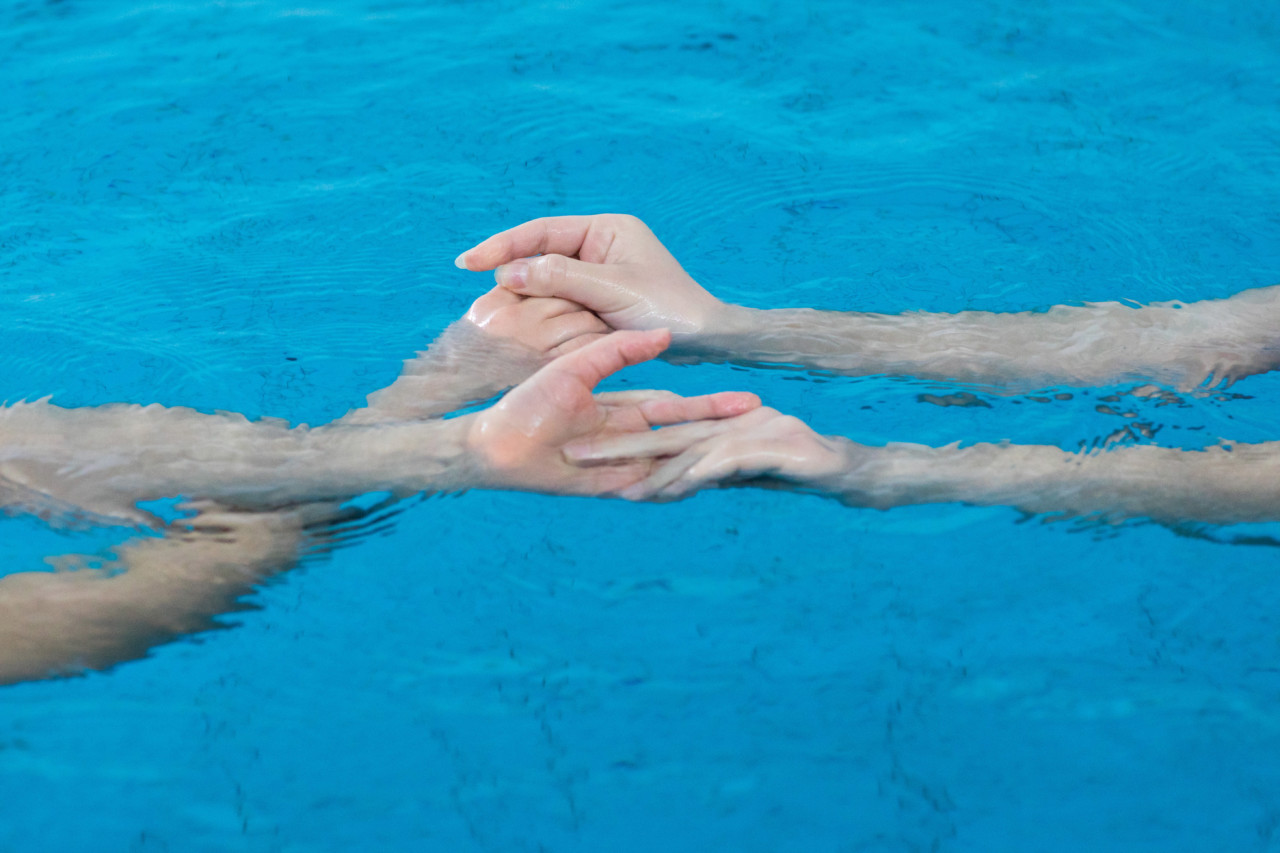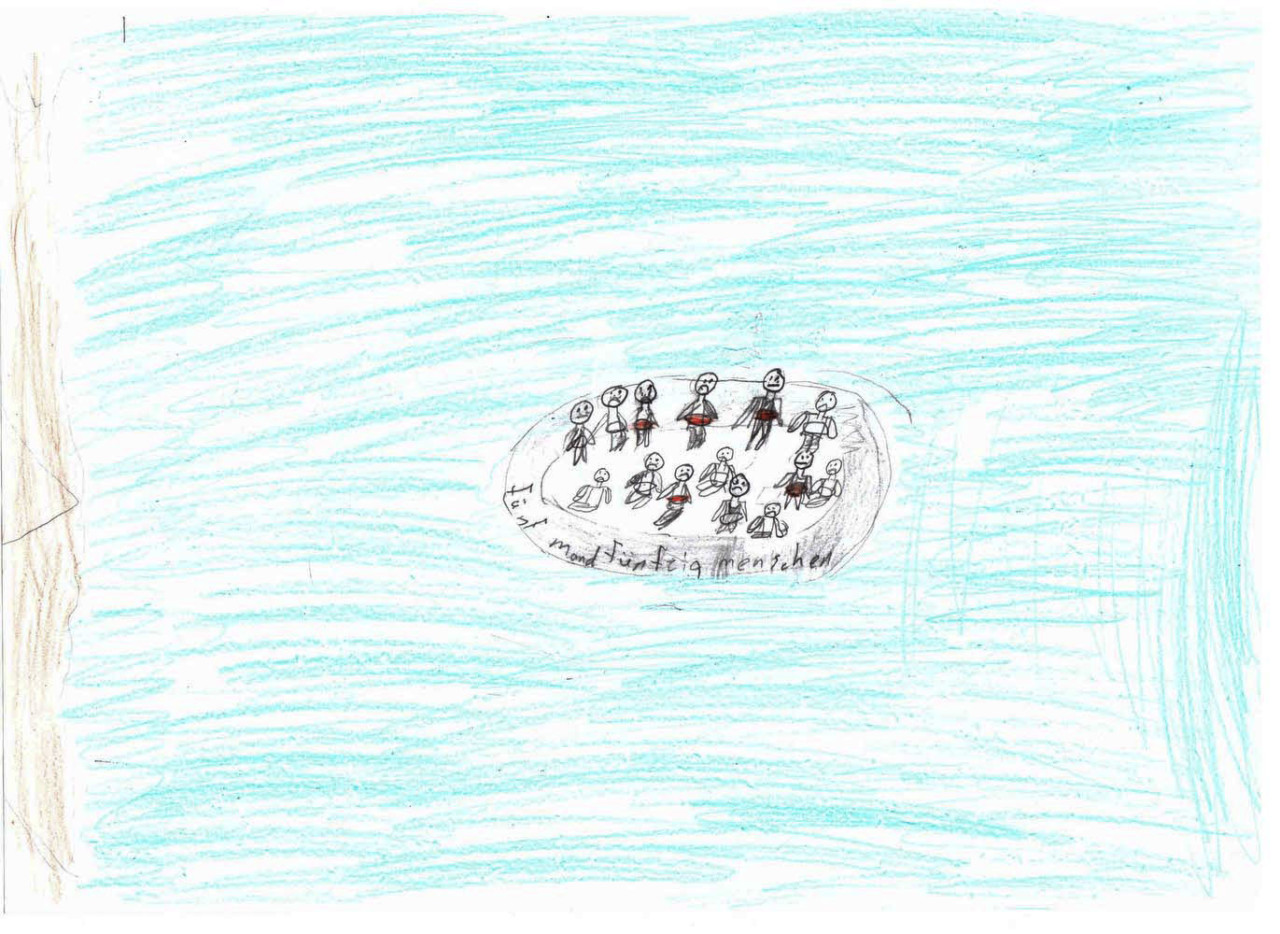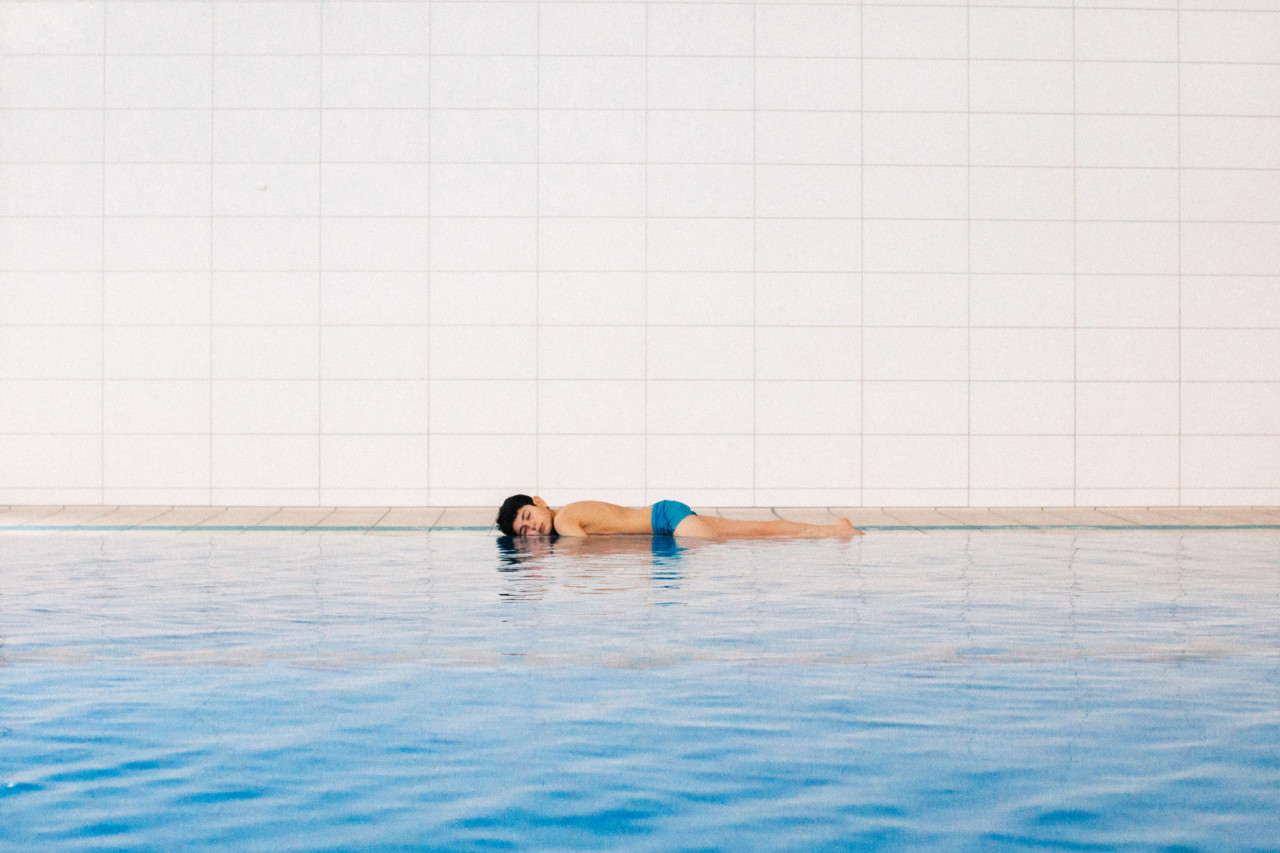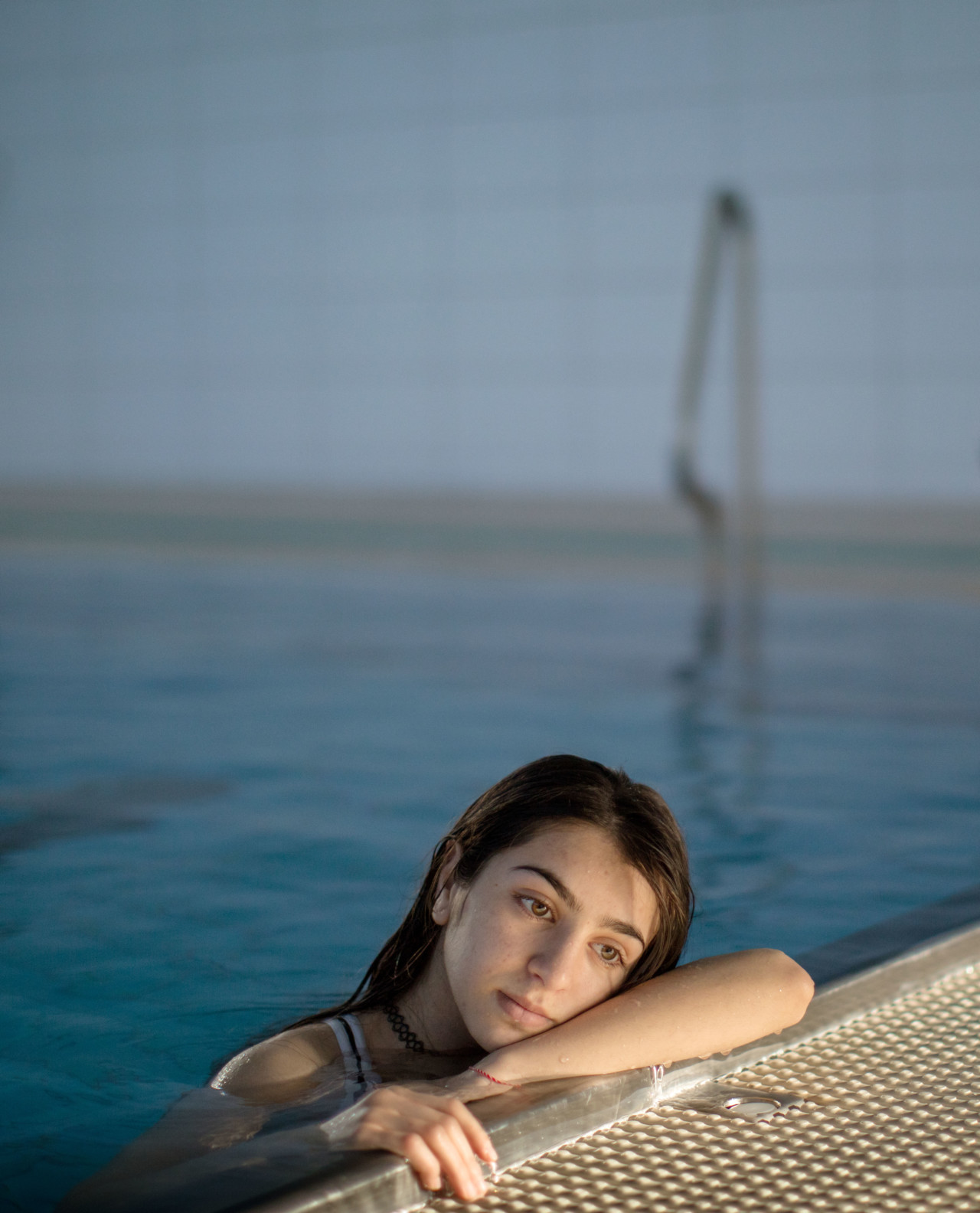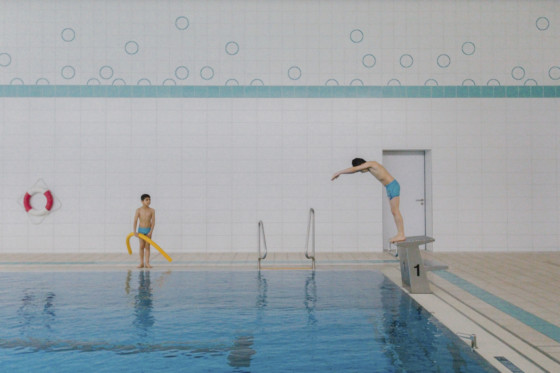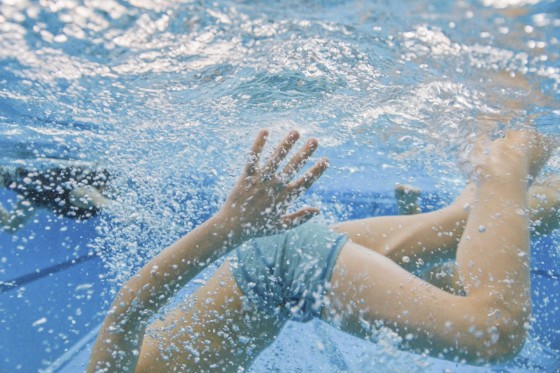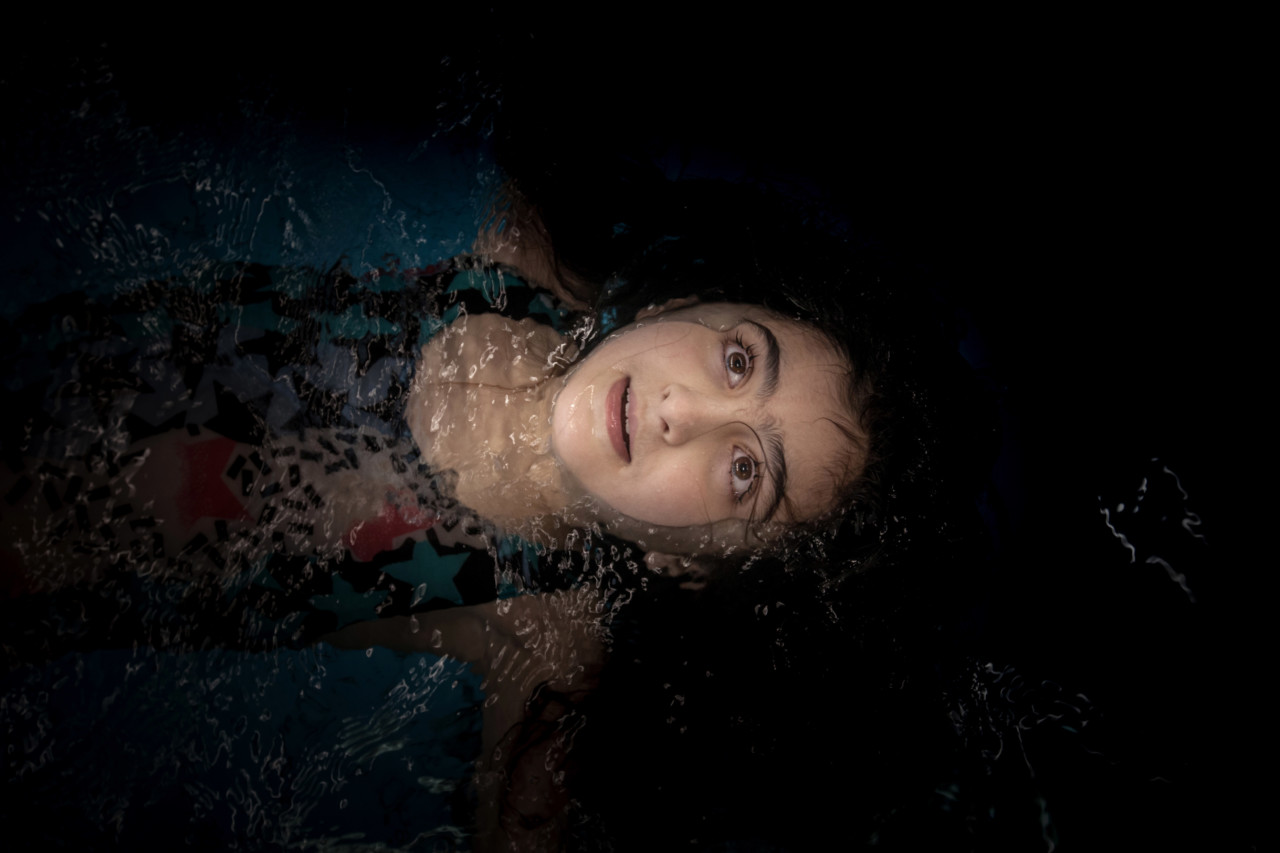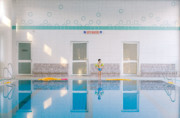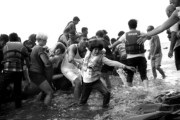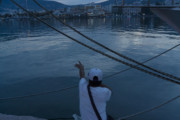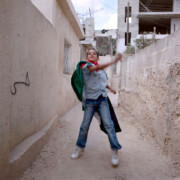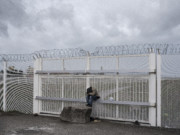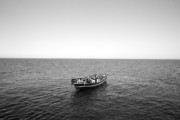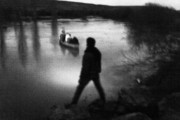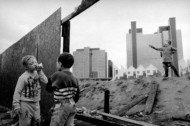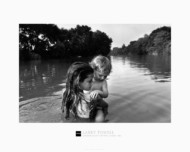The Big Sea
On World Refugee Day, 2019, we look back on Diana Markosian’s work documenting young refugees overcoming their fear of water, born of traumatic sea-crossings
In 2017 Diana Markosian was working in Germany, documenting a family of Afghan migrants and their efforts to acclimatise to their new homeland, when a young boy’s chance comment regarding his fear of water set her mind on course toward a new body of work. A wilful effort to cover the migrant crisis from an alternate perspective, and an interest in incorporating the voices of her subjects led Markosian to make The Big Sea, a study of young migrants overcoming their fears through swimming lessons.
How did The Big Sea project come together? And how difficult was it to get moving?
I had spent a year living in Germany, profiling a refugee family who had arrived from Afghanistan and now living in a shelter in Dusseldorf. I spent a lot of time with Milad, who was the oldest boy in the family. We walked past a lake one evening, and I asked him if he liked to swim. He explained that the last time he had been in water, was on his journey crossing the Aegean, on his way to Europe. His boat was flimsy and had a hole in it. The family nearly survived. It got me thinking about this fear, and whether this was perhaps a bigger issue. Was it something that existed beyond this one case?
When you spoke to them, was the alien nature of the sea a major factor? I think we forget that not only is such a crossing terrifying for anyone, but for many migrants it is a totally unfamiliar environment.
Absolutely. Very few of them had ever seen water on the scale of an ocean before finding themselves in it. It was extremely overwhelming interviewing the kids – because you really started to understand how life changing this experience was for them. When they first saw the pool, they spoke about the colour being the same as that big blue sea, and they spoke about their fear of getting in. Their only experience of the sea was not one of safety, or security or enjoyment – it was one of fear and risk.
How did you go from understanding that this trauma was a common problem to actually engaging with these children, and bringing them into the project?
I immersed myself in the story of migration for 2 years before properly starting this project. I remember learning about the fear of water, and wanting to start a swimming course for refugees in Dusseldorf, but found the level of bureaucracy to be too much. That’s when I started to research existing courses – and discovered a class in Wolfsburg. I spoke to the instructor, Günter Schütte who invited me to visit the town to watch a swimming class.
"At first some cling to the coach and refuse to let go. It takes time for them to learn that the water can support them, and will not devour them."
- Günter Schütte
Swimming instructor Günter Schütte runs the classes which Markosian photographed. While he only meets with children who volunteer, and so can’t speak to the breadth of such fears among all refugees, he explains that in his experience such fears “can be huge, and paralysing.” The process of breaking down these fears can be time consuming, “Initially it’s about building trust so that the learners feel that they can go limp, that they will not drown. We use a pool with an adjustable floor, which means that at first we can perform water habituation exercises: splashing them, splashing faces, exhaling into the water, in just 80 cm of water.”
Even with such care taken, learning to relinquish deep-seated fears can be a struggle for these children, “At first some cling to the coach and refuse to let go”, explains Schütte, “It takes time for them to learn that the water can support them, and will not devour them.” Those children who learn to swim are offered the chance of swimming in a nearby lake, but Schütte notes that, “even those who have learned to swim might struggle overcoming their fear of doing so in open water. The idea of actually enjoying such a thing can come only with time.”
Alongside the interviews you did with these children, they also created drawings for the project. How did that side of things come into play, and how important did you feel it was to included their voices in this way?
With a project like this, I think you have to do more than just take an image to understand their story. Initially I reached out to an art therapist to understand how to go about documenting this story. Together we asked the children to visualize their journey to Germany. I needed to do more than just take an image to understand their journey. The drawings and interviews served as my entry point to their story.
Many of them drew maps, and many of them drew big, blue areas of water with tiny boats in them. Inside those boats, even tinier figures. It was so reflective of how they must have felt, and still do: tiny individuals who had a life changing experience that forever will be marked by the journey they made.
"I think you have to do more than just take an image. You need the drawings and interviews to bring in the views and feelings of the subjects"
- Diana Markosian
In spite of the space being somewhat forbidding and often chaotic – as you said, it was possibly not what you had in mind artistically – the images are often serene, reflective…
For me that was really about arriving at different times, working out the best times to achieve what I wanted visually. Most importantly it was about asking myself what sort of images I wanted to create. I wanted to reflect what I felt from the swimmers. There was a sense of hope in them, a new beginning. I wanted these images to be reflective of their journey.
Was it important for you – at that time – to make a positive story about migrants? Were concerns around a degree of news fatigue around the migrant crisis in your mind?
This project was made during a period of time when it seemed like every photographer was making work about the refugee crisis. I wanted to find a way to have a voice in this part of history. Ultimately the project ended up being about the endpoint of these journeys.
On one hand, it felt like I was making it at the wrong time, in terms of the news-cycle, but then again this story was never about the news, it was about studying the aftermath, looking at those individuals who survived, and seeing how they are reconciling with these life changing events. It is a chapter in that wider genre of work, which aligns to my voice as an artist.


